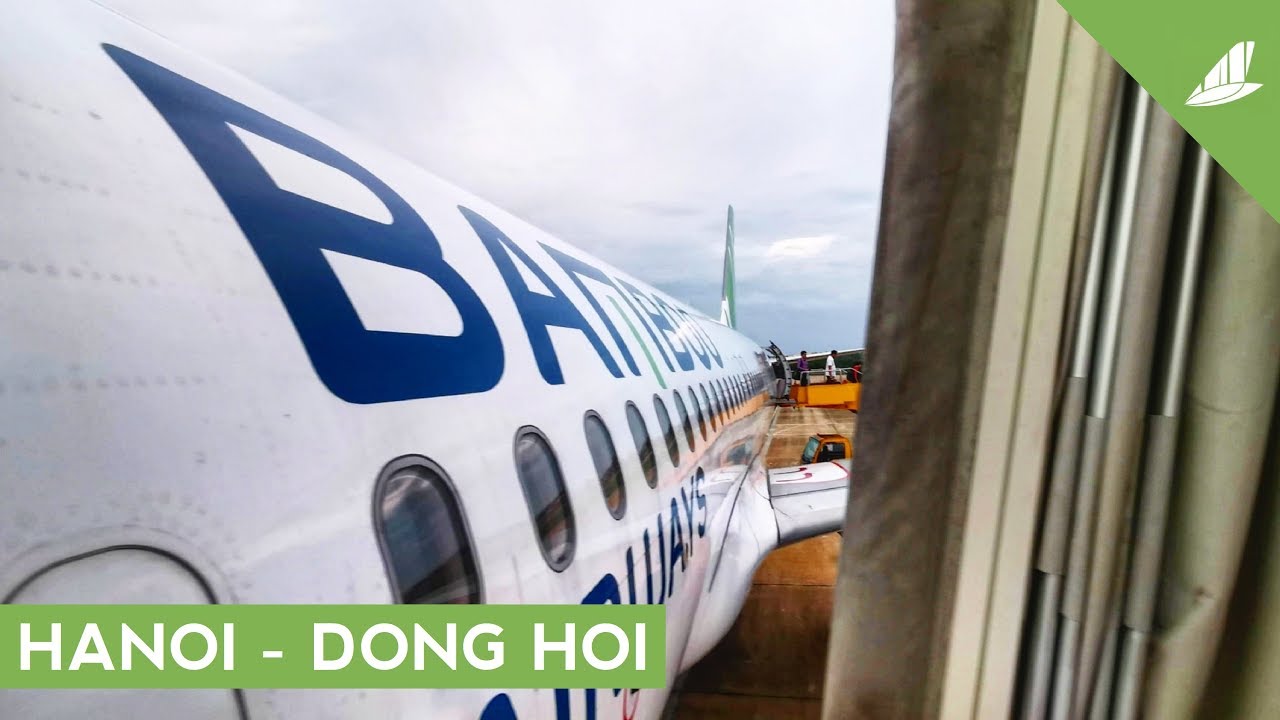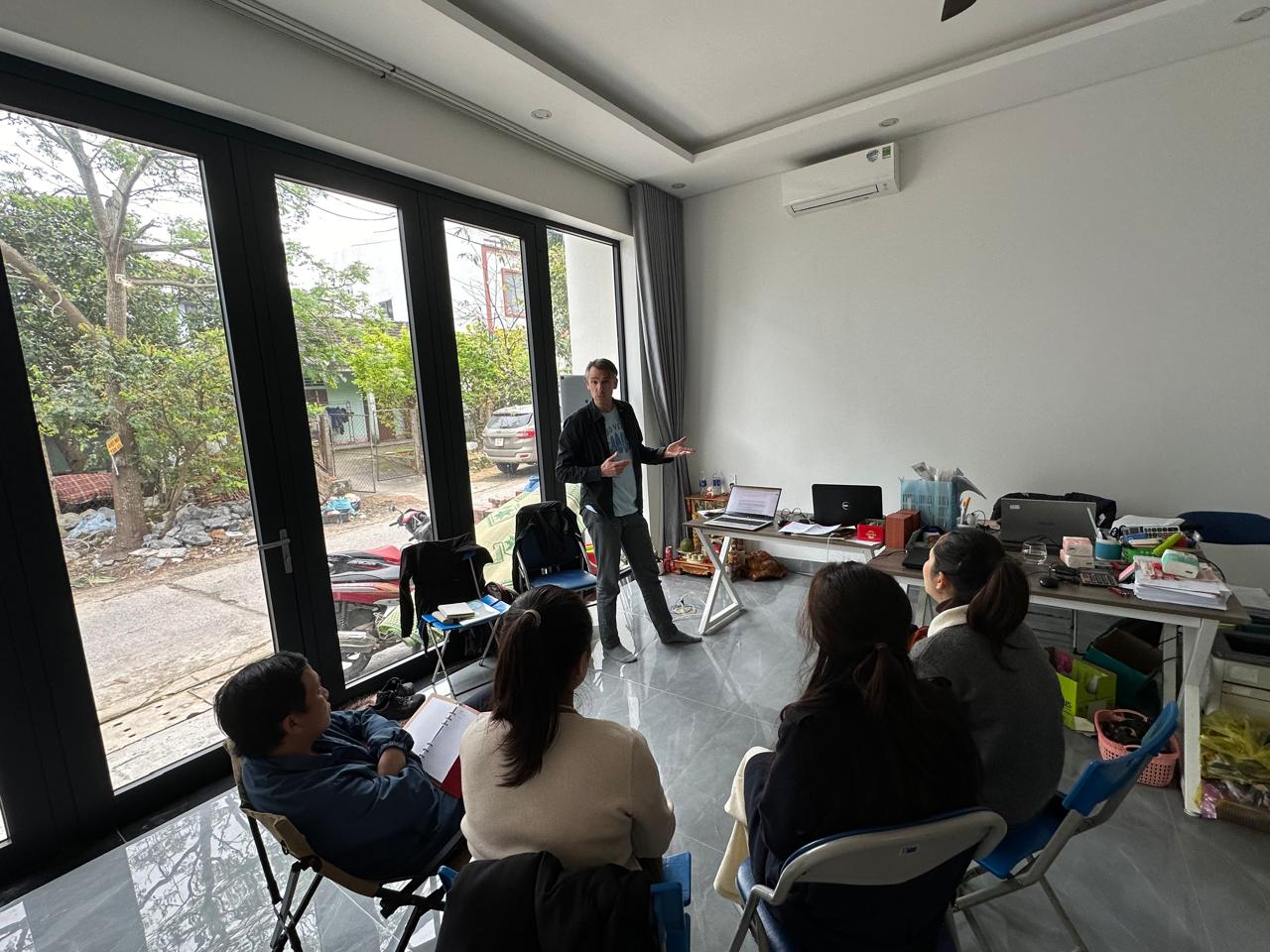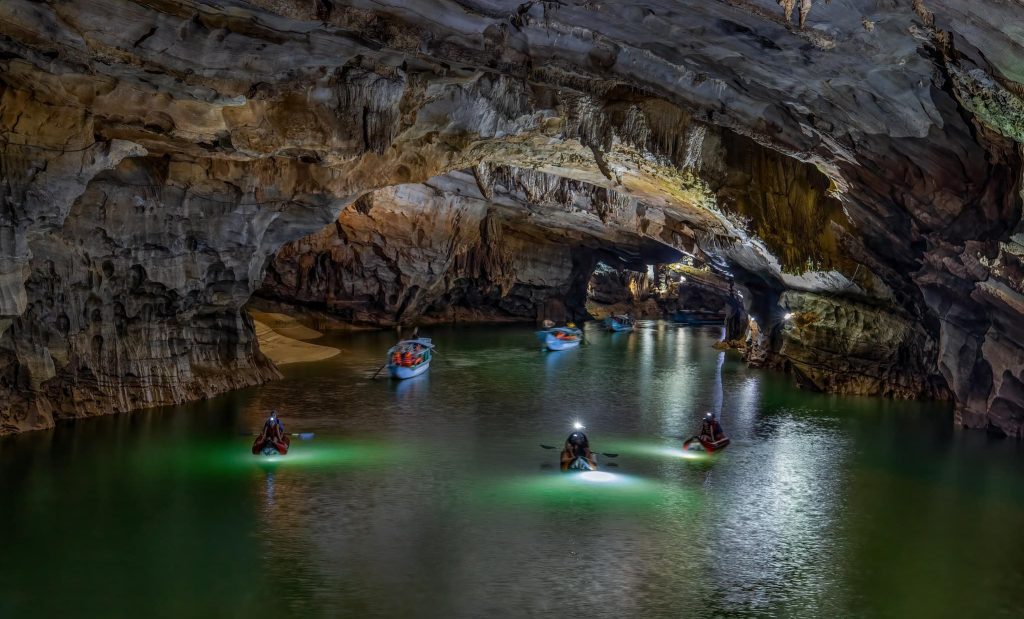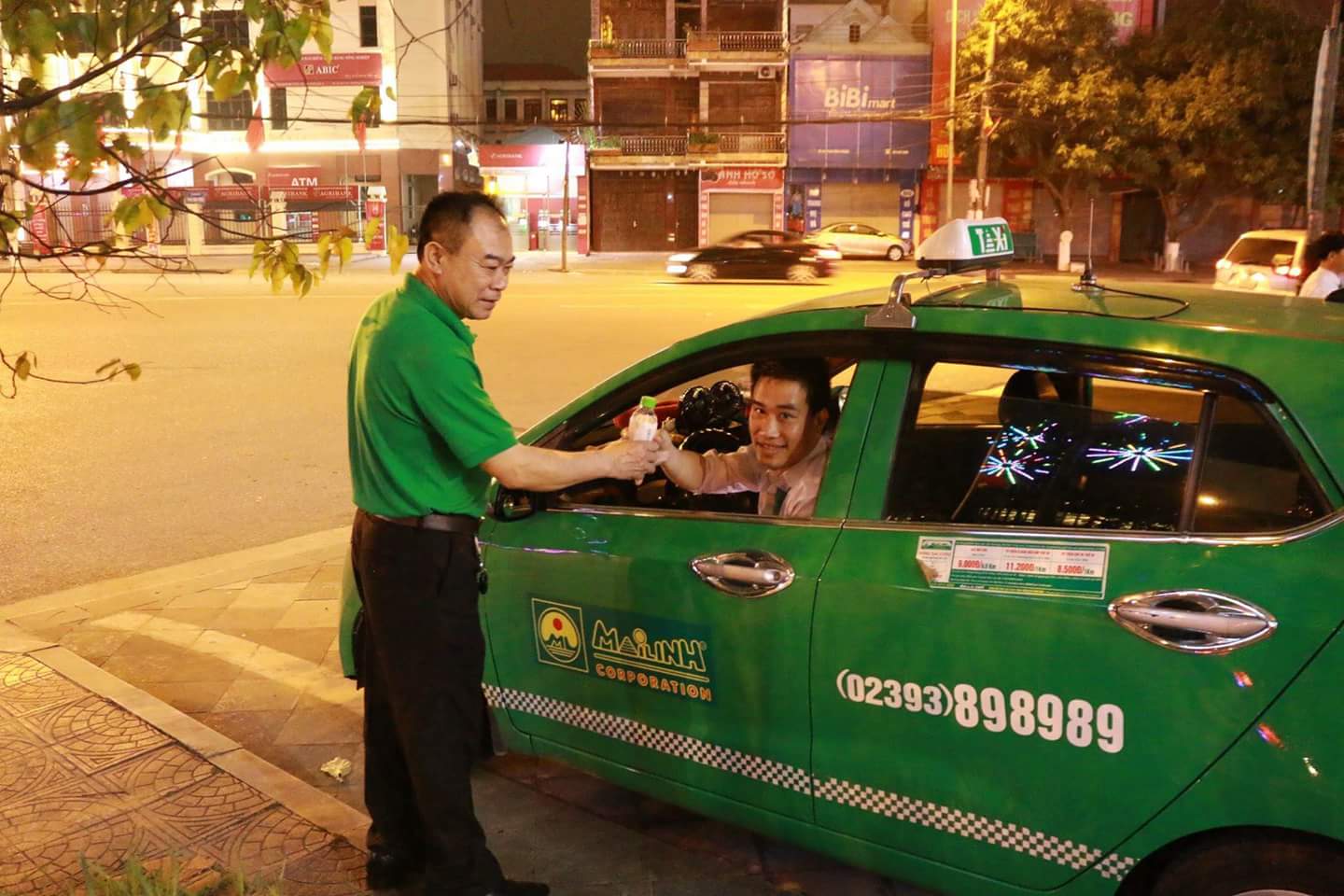14:05 - 16.09.2024
New rice festival of Bru Van Kieu people in Quang Binh
14:05 - 16.09.2024
Quang Binh is a province with a long-standing historical and cultural tradition, where people have lived since ancient times; a place containing many cultural vestiges of the population in the historical process of the nation.
The new rice festival of the Bru Van Kieu people in Ngan Thuy commune thanks the gods for blessing them with a good harvest, and prays to the rice god, river gods, and mountain gods for a better season.
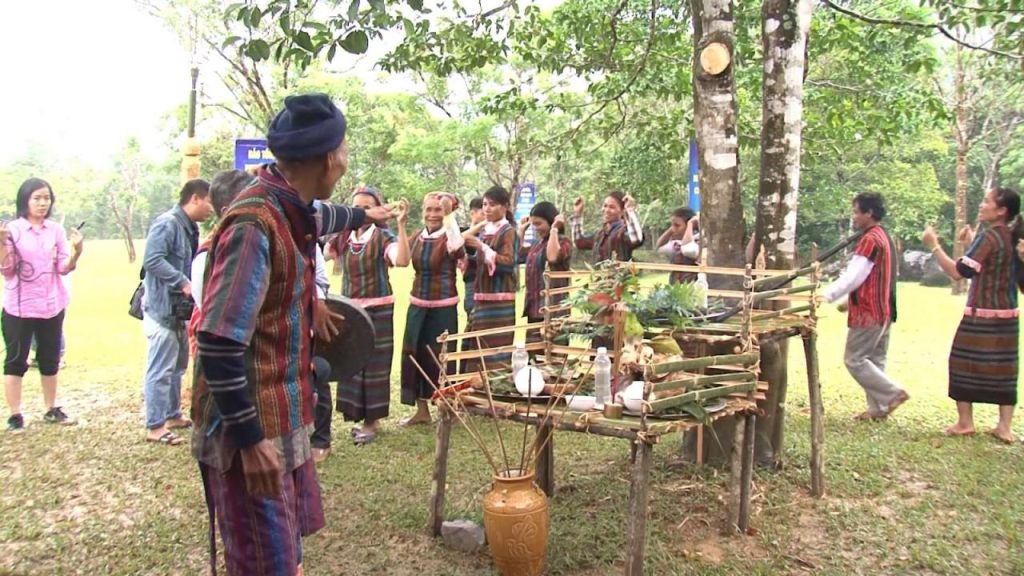
Ethnic minorities in Quang Binh
The ethnic minority and mountainous areas of Quang Binh province have a natural area of about 3,845 km2, with 9 border communes and 201 km of border with the Lao People’s Democratic Republic. The population as of December 31, 2021 was 10,907 households, 45,400 people. Ethnic minorities live in communities in 102 villages and hamlets in 15 communes and 3 hamlets of Minh Hoa, Tuyen Hoa, Bo Trach, Quang Ninh and Le Thuy districts. The ethnic minority population has 6,417 households, 27,004 people (accounting for more than 2.96% of the province’s population). Of which, the Bru-Van Kieu ethnic group has 4,543 households, 19,209 people, including the following ethnic groups: Van Kieu, Khua, Ma Coong, Tri; The Chut ethnic group has 1,717 households and 7,064 people, including the following ethnic groups: Sach, Ruc, A rem, May and Ma lieng. These are the two ethnic minorities with the largest population, the rest are other ethnic minorities with smaller populations such as: Muong, Tho, Tay, Nung, Thai… with 57 households and 177 people. The poverty rate among ethnic minorities is 69.52%.
Preserving the culture of ethnic minorities in Quang Binh
The residential areas of ethnic minorities in Quang Binh are mainly in villages and hamlets on the majestic Truong Son mountain range. In the process of survival and development, ethnic minorities in Quang Binh have created and preserved many unique material and spiritual cultural values; at the same time, they have also contributed a lot of effort and blood to the cause of protecting and building their villages, their homeland and their country.
The intangible cultural heritages (festivals, beliefs, customs – practices, folk knowledge – performances, …) of ethnic minorities in Quang Binh are very rich, unique and have many humanistic and aesthetic values, reflecting the love, aspiration to live and rise up to protect the survival of the nation, of the community as well as the economic and social life of each ethnic group; are important historical sources, contributing to enriching the cultural treasure of the homeland and the country.
Bru Vân Kiều people
Among the ethnic minorities in Quang Binh, the Bru-Van Kieu ethnic group consists of many ethnic groups, with many different names. The Van Kieu ethnic group lives in Truong Son and Truong Xuan communes (Quang Ninh district) and Ngan Thuy and Kim Thuy communes (Le Thuy district); the Khua ethnic group lives in Dan Hoa commune (Minh Hoa district), Thuong Trach commune (Bo Trach district). The Tri ethnic group (also known as Tia-Ri, Cha-Ly, Trui,…) and the Ma-Coong ethnic group (also known as Mang-Coong, Mong-Khong, Muong-Kong,…) live in Thuong Trach commune (Bo Trach district).
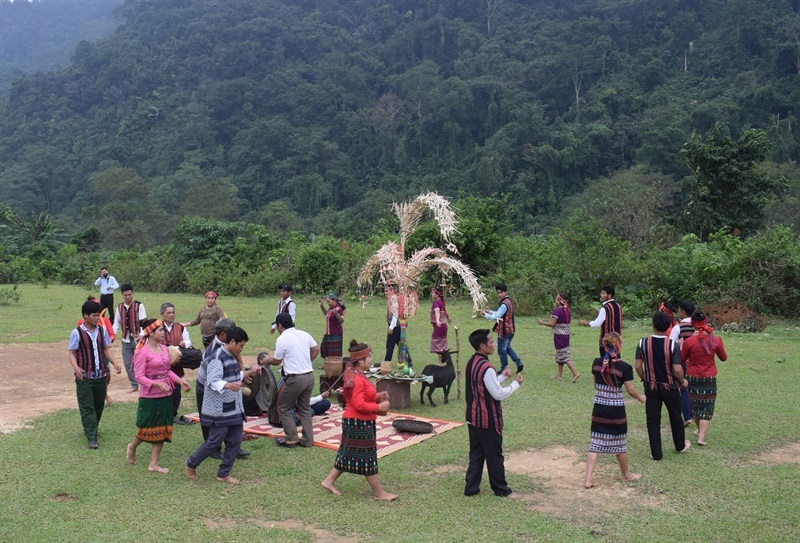
Through many historical changes, the Bru-Van Kieu ethnic group in Quang Binh has maintained its linguistic unity as well as its fine cultural traditions. On the other hand, they also have a spirit of solidarity and attachment to other ethnic groups in the big family of Vietnam.
The Bru Van Kieu people set the days and names of the months by observing the movement of the moon. They also believe that there are good days (the 4th, 7th, 9th) and bad days (the 30th and 1st). Each year, the Bru Van Kieu agricultural calendar consists of 10 months. The planting time usually begins in May (Rool) and lasts until the moonrise (Ca xo lain) in June. In October, when the rice is ripe, the Bru Van Kieu people organize the harvest. On the first day of harvest, they do not allow strangers into the village or fields, and they are not allowed to defecate. The harvest time lasts until November. December is the time to rest.
New rice festival of Bru Van Kieu people
The Bru Van Kieu people attach great importance to seasonal worship ceremonies, their beliefs still bear traces of totemism. They believe in mysterious gods (Yang), they consider all things spiritual, worship the rice god. The rice god is considered the most important god (In legend, the rice god is symbolized in the shape of a gourd) who not only saves people in great floods but also brings prosperity and happiness to their people. Therefore, the Bru Van Kieu people always preserve festivals related to the rice god such as the sowing ceremony, the new rice celebration. The worship ceremonies are quite deeply related to production activities such as the stages of burning the core, sowing, threshing rice and storing rice…
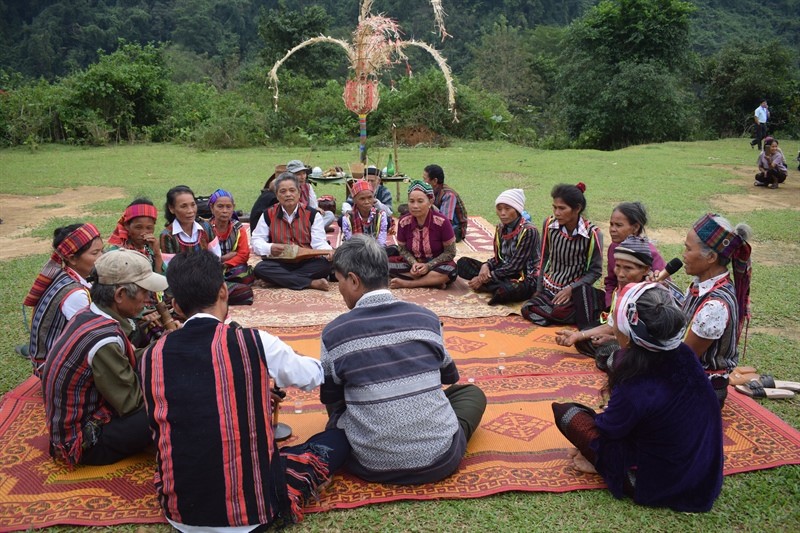
The new rice festival is usually held in the middle of the 12th lunar month. The Van Kieu people call it Tu Ka Bon. The Tu Ka Bon ceremony is held every 3 to 5 years. This is a ceremony held when the crop season ends and a new crop season begins. They offer thanks to the gods for blessing them with a good crop, and at the same time pray to the rice god, the river god, and the mountain god for a better crop. The Van Kieu people have a proverb: “Ca xay oong, ta oong ngoai cha” (meaning December is the month of eating and playing). December is usually the month of rest after a harvest, when people visit, participate in community activities with festivals, and then focus their efforts on the next crop.
For generations, the Bru-Van Kieu ethnic group in Quang Binh has lived mainly by slash-and-burn agriculture. They often seek land for cultivation in places with old forests, many trees, and little wind, ensuring production. The Bru-Van Kieu ethnic group in Quang Binh set the days and names of the months by observing the movement of the moon. At the same time, they also believe that there are good days and bad days.
The Bru-Van Kieu people’s agricultural calendar consists of 10 months each year; the planting season usually begins in May and lasts until the moonrise of June. When the rice ripens in August and October, the Bru-Van Kieu people organize the harvest. The Bru-Van Kieu people grow rice, in addition to cassava, corn, potatoes, squash, pumpkins, and raise buffalo, cows, pigs, and chickens. In the past, they used primitive tools such as a plow knife, a chopping axe, a stick to poke holes, and a rake. The Bru-Van people have a custom of clearing a place and marking it, then dreaming at night, if they see “good omens” they will continue to clear, if they see “bad omens”, they will leave and look for another place. The Bru-Van Kieu people work on their own fields and fields according to their own calendar. Up to now, the agricultural production level of the Bru-Van Kieu people in Quang Binh has improved relatively, but basically the above farming calendar remains unchanged.
New Rice Ceremony
The new rice offering ceremony of the Van Kieu ethnic group is carried out in two steps. First, after harvesting rice from the fields, each family often organizes a “rice spirit welcoming” ceremony. In this ceremony, only family members participate, no outside guests are invited. First, the wife goes to the fields to choose the full rice grains and ties them to the main house pillar (main pillar) to worship Yang. The offerings include a little wine, meat, and a bowl of new rice. After the family offering ceremony, the communal offering ceremony is held at the village chief’s house. In this ceremony, families are responsible for contributing offerings including: A jar of wine, a grilled fish, a plate of leaf cakes, and a bowl of new rice. On each offering, there are leaves, which symbolize freshness and a good harvest. After preparing all the necessary offerings, the village chief, who is also the master of ceremonies, stands up to pray and invite the field spirits to eat the new rice. The content of the prayer is as follows: Oh Yang in the east, Yang in the west, Yang in the clouds, Yang in the lightning, Yang in the mountains… now the rice has been harvested, the rice spirit has returned to the warehouse, the pig has been slaughtered, the jars are full of wine, please invite the Yangs to hold the wine bottle, eat a piece of pork, eat a bowl of new rice, hoping that the Yangs will give the rice a good harvest next season, the grains will be full, when the harvest time comes, the basket will be full, the warehouse will be full, the person can’t carry it all… oh Yangs… The Van Kieu people also have the custom of asking for a bet after the ceremony by tossing a white silver coin. If the coin lands heads, it means that the Yangs support that next year will be a good harvest. If the coin lands heads, you must continue to ask until the Yangs approve.
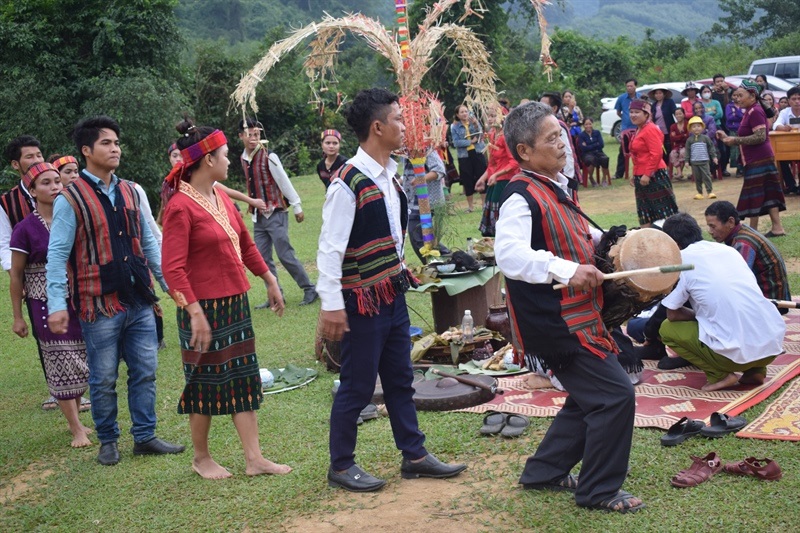
In the past, almost the entire life of the Bru-Van Kieu people was bound by the gods. All things, all natural phenomena as well as in life, for them, could become sacred and be worshiped. Among them, the most popular gods are the rice god (dang kăn tro), the mountain god (dang co), the river god (dang krong), the land god (dang ku te), the tree god (dang a luong),… The Bru-Van Kieu people highly value seasonal worship ceremonies, their agricultural beliefs still bear traces of totemism. They believe in mysterious gods, they consider all things to be spiritual, and worship the rice god. The rice god is considered the most important god, not only saving people in great floods but also bringing prosperity and happiness to their people. Therefore, the Bru-Van Kieu people always preserve festivals related to the rice god such as the sowing ceremony, the new rice celebration. The ceremonies are deeply related to production activities such as burning the soil, pruning, threshing and storing rice…
The Bru – Van Kieu people prepare offerings for the new rice festival very carefully. After being harvested from the fields and brought home, the sticky rice will be left for at least 3 days before being pounded. During those 3 days, the rice grains are dried, winnowed, cleaned, and the firmest grains are selected and stored in the warehouse. After the rice has been dried and cleaned, people put it in a large wooden mortar to pound. With skillful but equally strong and sturdy hands, the Bru – Van Kieu women have created the finished product of trays of white, fragrant sticky rice.
As the day of the ceremony approaches, the Bru-Van Kieu women go together to carry firewood, fetch water, cut dong leaves, and pick vegetables from the forest and fields to prepare offerings for the new rice ceremony. Meanwhile, the men hold bows, crossbows, slingshots, and carry fishing nets to the forest and streams to look for the fruits of nature such as fish, wild honey, and other products.
The village elders, village chiefs, and prestigious people among the Bru – Van Kieu people prepare to erect poles shaped like rice plants. On the poles, bunches of rice plants with many grains are tied to the poles. The poles are decorated with images of birds, the moon, and the sun with simple but elegant lines.
The new rice festival of the Bru – Van Kieu people in Quang Binh is organized on a community scale, with contributions from the people themselves. The festival is often organized in groups or clans. Each clan contributes according to the portion of each household… The portions are regulated as contributing a pig, a chicken, a jar of wine and many other products and cakes. In particular, the indispensable items at the festival are trays of new rice for offerings.
At the ceremony, people participated in performing rituals, folk games and practicing and transmitting traditional cultural values of their nation. The elders drank wine and sang folk songs. Some played gongs, blew trumpets, flutes… The lyrics were traditional folk songs praying for a peaceful life.
The New Rice Celebration of the Bru Van Kieu people in Ngan Thuy is recognized as a national intangible heritage.
Through many changes and ups and downs of history, the Van Kieu people in Ngan Thuy commune have promoted and preserved their cultural identity so that today their new rice festival has been recognized as a national intangible heritage.
Tourists who come to experience the western of Quang Binh can immerse themselves in the new rice festival. In addition to exploring caves or trekking in forests and waterfalls, learning about the culture of the local people here is an indispensable highlight when traveling here.
Bài viết liên quan
12:36 - 10.03.2025
Netin Travel Hosts Mr. Tijmen from PUM for a Short-Term Training Course in Dong Hoi
13:44 - 16.09.2024
Phong Nha Cave – An irresistible tourist destination in Viet Nam
14:03 - 16.09.2024
Số điện thoại taxi Hà Tĩnh cho du khách
Related Articles
14:05 - 16.09.2024
Di chuyển từ Hà Nội đến Quảng Bình 3 cách phổ biến nhất
12:36 - 10.03.2025
Netin Travel Hosts Mr. Tijmen from PUM for a Short-Term Training Course in Dong Hoi
13:44 - 16.09.2024
Phong Nha Cave – An irresistible tourist destination in Viet Nam
14:03 - 16.09.2024











